DAY 3, Apr 14 Sunday 2024:
Day trip Nikko [Shrines Futarasan, Taiyūin-byō, Rinno-ji, Toshogu, Shinkyu bridge]
Nikko is located about 125 kilometers north of Tokyo.
Ornate shrines coexist with towering peaks, dramatic waterfalls, rejuvenating hot springs.
Nikko had been a center of Shinto and Buddhist mountain worship for many centuries before Toshogu was built in the 1600s, and Nikko National Park continues to offer scenic, mountainous landscapes, lakes, waterfalls, hot springs, wild monkeys and hiking trails.
We had bought tickets for the Tobu Nikko Limited express online before we landed
From our Hirai station we went to Asakusabashi Station, then to Asakusa station, got help from a Japanese boy which exit to take to get to Tobu Asakusa station... he pointed on the map EXIT A5 which turned out correct, 280m walk in total
we walked to the station and boarded our train
We had our meal on our two hour train journeyWhen we got off the train, it was a beautiful sight to see snow peaked mountains. The hill station vibe was welcome.
BOUGHT BUS DAY PASS AND COMBO TICKETS FOR SHRINES
We walked to the tourist information centre there to buy the day pass for the bus for 600 yen. We also bought the entry tickets, the combo tickets for the main shrines. Our plan was to go to the famous Toshagu first but the guides there advised to see the Futarasan shrine first and then walk down to the others instead of walking up the slope. We did so and those shrines were really beautiful.
But by the time we reached Toshogu it was slammed with crowds so still don't know whether that was the best strategy
Boarded this heritage bus
Futarasan Shrine
All of Nikko's famous shrines and temples are clustered together in one area, about two kilometers from the Tobu and JR Nikko Stations. We can access them by bus (10 minutes, 350 yen one way or 600 yen for a day pass) or on foot in about 30-40 minutes by walking up Nikko's main street.
Two bus lines can be used to access the shrines and temples:
Buses in the direction of Lake Chuzenji stop at "Shinkyo" and "Nishisando" bus stops along the way, from where the shrines and temples are a 5-10 minute walk.
Furthermore, there is the World Heritage Meguri loop bus, that circles around town every 15-20 minutes and stops a little bit closer to the shrines and temples. Get off at the "Omotesando" stop for Toshogu and Rinnoji or the "Taiyuin-Futarasanjinja-mae" stop for the Taiyuin and Futarasan Shrine.
The buses are covered by the Tobu free passes.
Cypress trees a few hundred years old...
Japanese cypress trees
cleansing fountain...
SHRINE ALTAR
Sake gift
Daikoku-den 大黒殿
Dragon water fountain for cleansing
Taiyūin-byō Shrine, Nikkō
Taiyuin (大猷院, Taiyūin) is the mausoleum of the third Tokugawa shogun, Iemitsu, the grandson of Ieyasu.
Iemitsu's lavish mausoleum complex resembles nearby Toshogu Shrine in its layout and architecture, but it was intentionally built more modest than the Toshogu due to Iemitsu's deep respect for his grandfather. Taiyuin is the posthumous name of Iemitsu.
First is the vermillion Niomon Gate, the entrance to the Taiyuin.
it houses two Nio (Buddhist guardian kings): an ""agyo"" image with its mouth open and ""Ungyo"" image with its mouth closed.
Omizuya, Purification Fountain.
Omizuya, Purification Fountain.
Proceeding on leads to the more lavishly decorated Nitenmon Gate which is guarded by two heavenly kings, followed by two beautiful structures - a drum tower on the left and a belfry on the right.
The temple grounds are lined with 315 lanterns
praying hall (haiden)
ACOUSTICS
the Yakushido temple within Rinnoji Temple is known for its unique and peculiar acoustics. they had all the devotees lined up before the entrance to the acoustics hall and they let in people by batches and explained in English for tourists. we take off shoes and go inside. It was a really beautiful and exclusive experience. The temple staff explain and demonstrate the building's acoustic effects, particularly highlighting the different echo under the “Nakiryu”, or crying dragon, a painting on the ceiling. They strike two sticks in various places, but only when being exactly under the dragon's head, we hear a peculiar vibration as if the dragon is roaring.
The priest also asked our birth year and told us which God to pray to for our wish fulfilment, he told of the 12 deities representing the star signs and the priest had a printed sheet so you could find your birth year and the animal that represented it.
the 37-kilometer (230-mile) route extending from Nikko City to Nikko Toshogu is called "Nikko Suginamiki," because it is lined with 15,000 Japanese cypress trees planted in the 17th century. This route is designated a Natural Monument.
Toshogu shrine
SACRED STOREHOUSES
Upon entering, we come across a group of ostentatiously built storehouses. Of the many colorful and elaborate wood carvings that decorate the storehouses, the most famous ones are those of the "see no evil, speak no evil and hear no evil" monkeys and the Sozonozo Elephants ("imagined elephants") that were carved by an artist who had never seen elephants.
Sozonozo Elephants ("imagined elephants") carved by an artist who had never seen elephants.
the three "see-no-evil, speak-no-evil, hear-no-evil" monkeys, can be seen on the Sacred Stable (Shinkyusha)
Toshogu Shrine (東照宮, Tōshōgū) is a magnificent memorial to Tokugawa Ieyasu, the founder of the Tokugawa Shogunate, which ruled Japan for over 250 years until 1868.
Ieyasu is enshrined at Toshogu as the deity Tosho Daigongen, "Great Deity of the East Shining Light". Initially a relatively simple mausoleum, Toshogu was enlarged into the spectacular complex seen today by Ieyasu's grandson Iemitsu during the first half of the 17th century.
The lavishly decorated shrine complex consists of more than a dozen buildings set in a beautiful forest. Countless wood carvings and large amounts of gold leaf were used to decorate the buildings in a way not seen elsewhere in Japan, where simplicity has been traditionally stressed in shrine architecture.
Yomeimon Gate
The Yomeimon Gate at the Nikko Toshogu Shrine is a glittering structure decorated with more than 240,000 pieces of gold leaf.The gate is about 7 meters wide between the pillars, 4 meters deep, and 11 meters high, and is decorated with 508 elaborate carvings of dragons, phoenixes, and other imaginary animals as well as events and sages including those from ancient China
it was renovated using the traditional technique of applying mercury to copper plates, applying gold leaf to that, then firing them to vaporize the mercury and fix the gold, a different technique from modern electroplating.
About 240,000 pieces of 10.9 cm square gold leaf are used in total for the gilding of the metal fittings and lacquered wooden parts of the Yomeimon Gate. Each leaf is extremely thin, at just 1/10,000th of a millimeter, and the leaves are carefully and uniformly attached one by one using lacquer and glue as an adhesive and making sure they are completely flat. Kanazawa gold leaf has been used
a technique in which color is added by applying iwaenogu, a traditional Japanese paint made from natural minerals, on top of the gold leaf is used in selected spots to make the carvings of animals, plants and patterns appear more vivid. Even if the iwaenogu on the surface peels off due to exposure to wind and rain, the gold leaf will appear from below, thus revealing a different kind of beauty.Cubby holes for storing shoes...
Honjido Hall featuring the "Crying Dragon"
A path to the left of Yomeimon leads to the Honjido Hall which features the "Crying Dragon", a large painting of a dragon on the ceiling. It is named so because a bright ringing sound can be heard when two pieces of wood are clapped directly under its head due to the acoustics of the hall. We lined up and were led inside in batches, The clapping of the wood was performed by a priest after an English explanation.The priest approached us individually, and told us which deity to pray to after we pointed our birth year in the chinese zodiac calendar
COOL EXPERIENCE!!
EMAS: VOTIVE TABLETS
Priests
Five story pagoda
Nikko Toshogu Museum (Homotsukan)
Nikko Toshogu Museum (Homotsukan) was opened in 2015 to commemorate the 400 year anniversary of Tokugawa Ieyasu's death. Inside this modern building is an impressive collection of the former shogun's personal effects from armor and swords to writing utensils and letters that he wrote
After seeing the museum we wanted to go to Lake Chūzenji and Kegan Falls but that is 25 kilometres away a narrow windy roads and we have to depend on public transport. Return train was at 7 and we had an early start the next day for our important day trip to Kawaguchiko to see Mount Fuji. We decided to walk back to the station, on the way
SHINKYO BRIDGE
we saw the famous Shinkyo Bridge. There is an entry ticket to go stand on the bridge and son did that while I took pictures of him from outside.
The current Shinkyo was constructed in 1636, At 28 meters long and nearly eight meters wide, the beautiful, vermilion-lacquered Shinkyo Bridge sits at the entrance to the Nikko mountains. According to legend, Buddhist monk Shodo, the first head priest of Nikko, asked the mountain deities for help crossing the Daiya River, at which point two snakes appeared and transformed into a bridge
The Shinkyo Bridge (神橋, Shinkyō, "sacred bridge") stands at the entrance to Nikko's shrines and temples, and belongs to Futarasan Shrine. The bridge is ranked as one of Japan's three finest bridges together with Iwakuni's Kintaikyo and Saruhashi in Yamanashi Prefecture.
AT THE NIKKO STATION
BACK TO TOKYO
End of a very beautiful day.
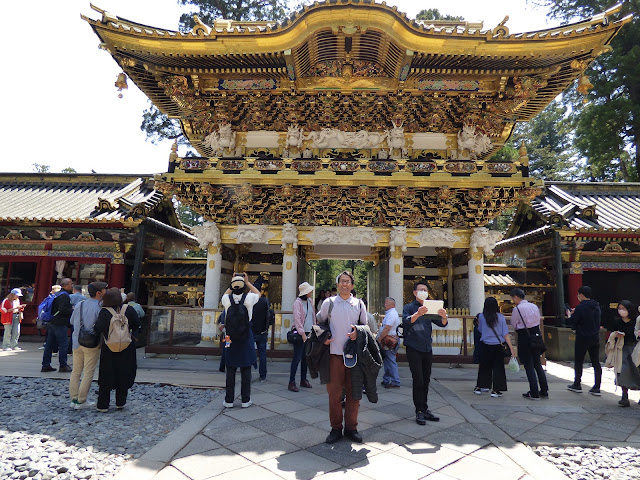






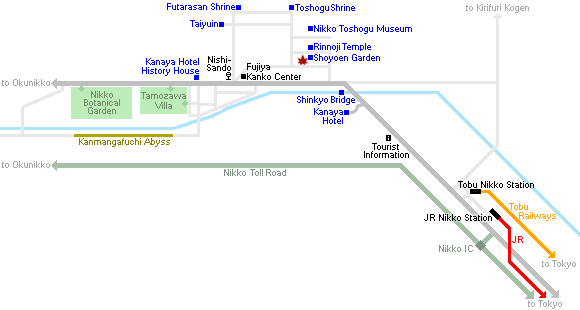






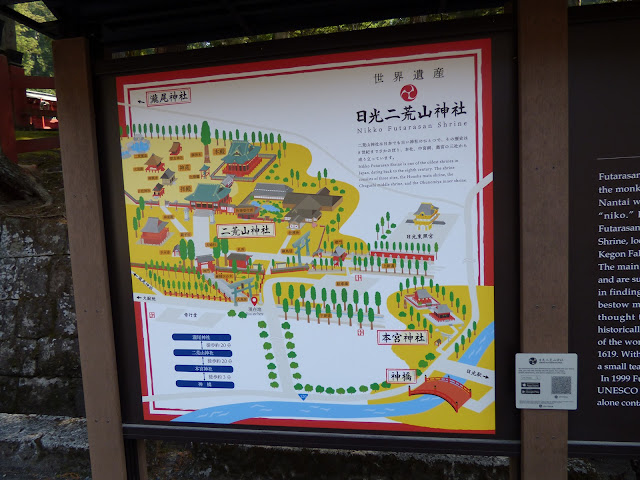






.jpg)
.jpg)
.jpg)
.jpg)










.jpg)











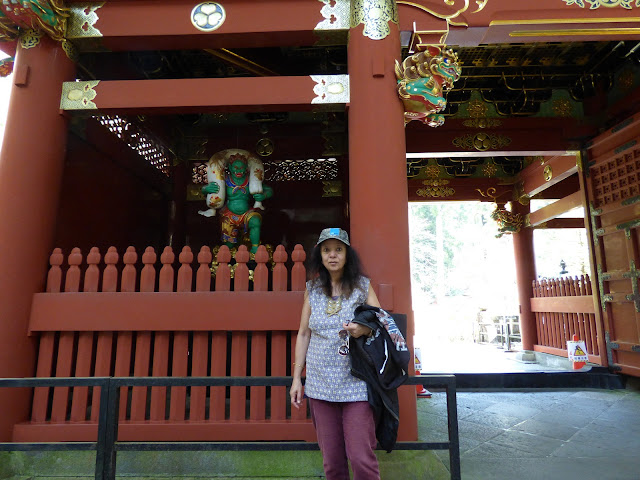

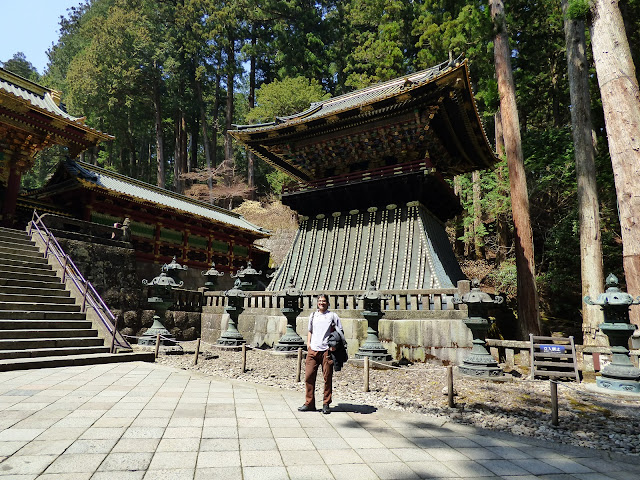

.jpg)








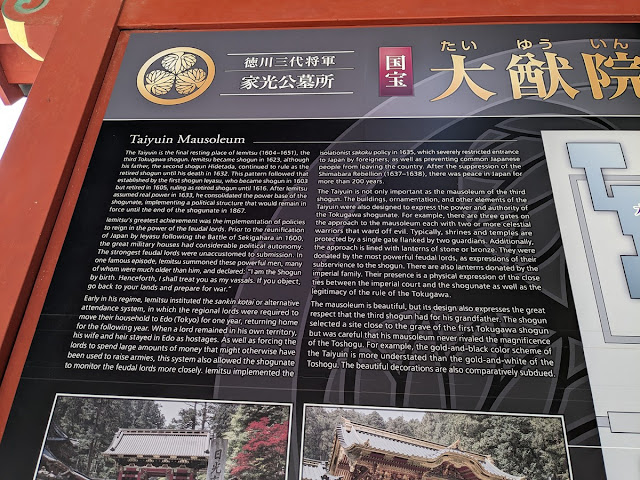





















.jpg)

.jpg)





.jpg)



.jpg)
.jpg)

.jpg)
.jpg)
.jpg)
.jpg)
.jpg)
.jpg)
.jpg)
.jpg)
.jpg)
.jpg)
.jpg)
.jpg)
.jpg)
.jpg)






.jpg)

.jpg)
.jpg)
.jpg)




























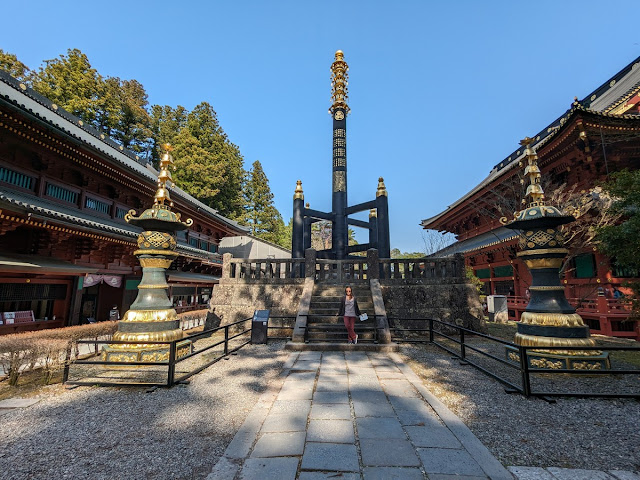


















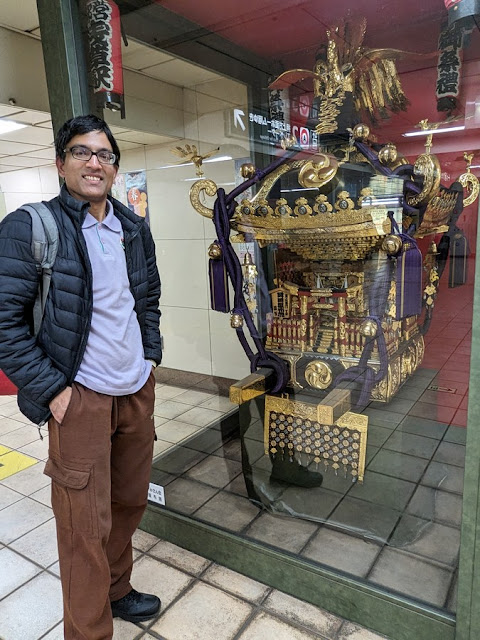

Thank you for your blog describing your beautiful day Nikko. Well done!
ReplyDeleteYou are welcome! Hope you have a great trip as well!
Delete